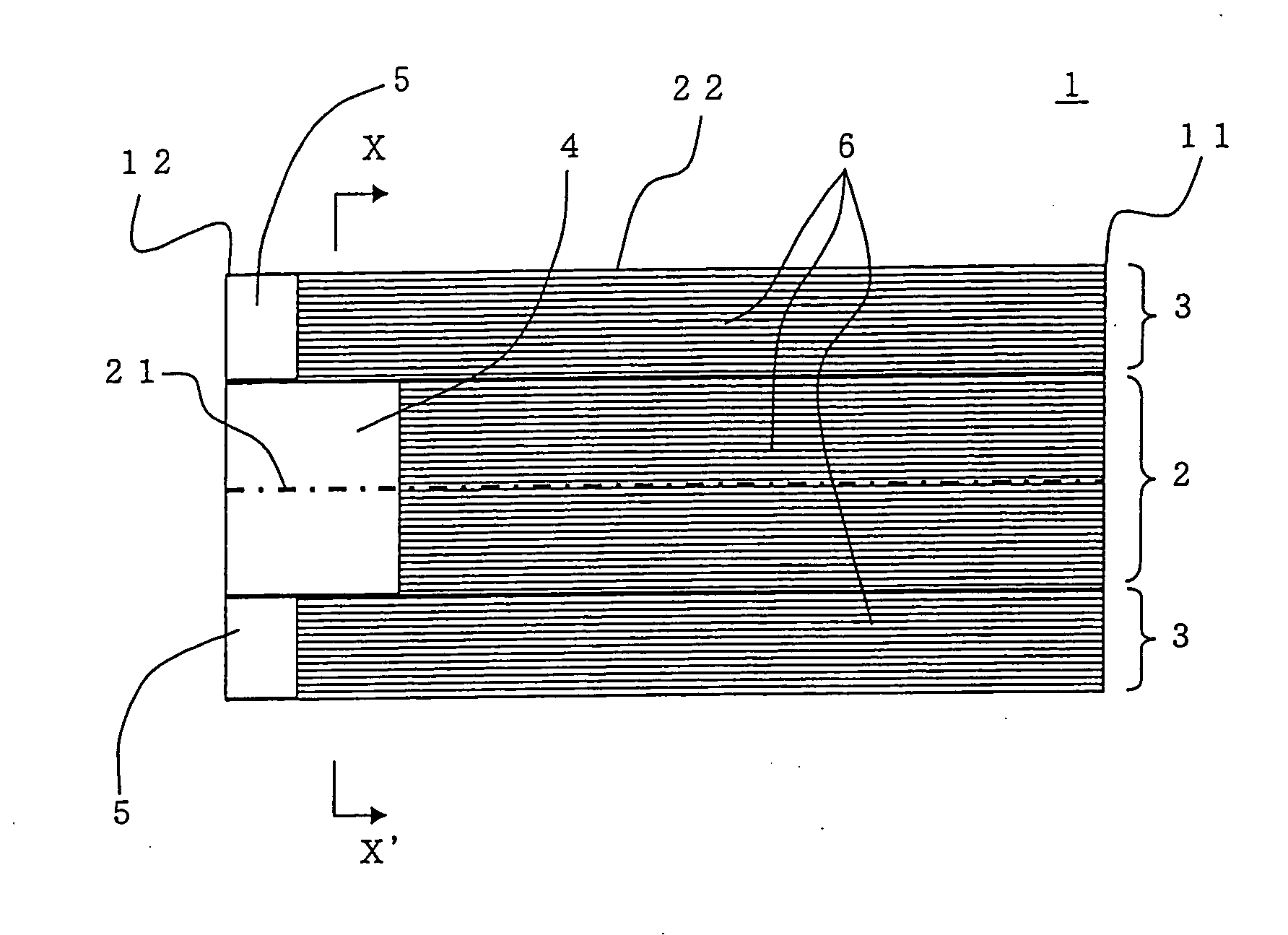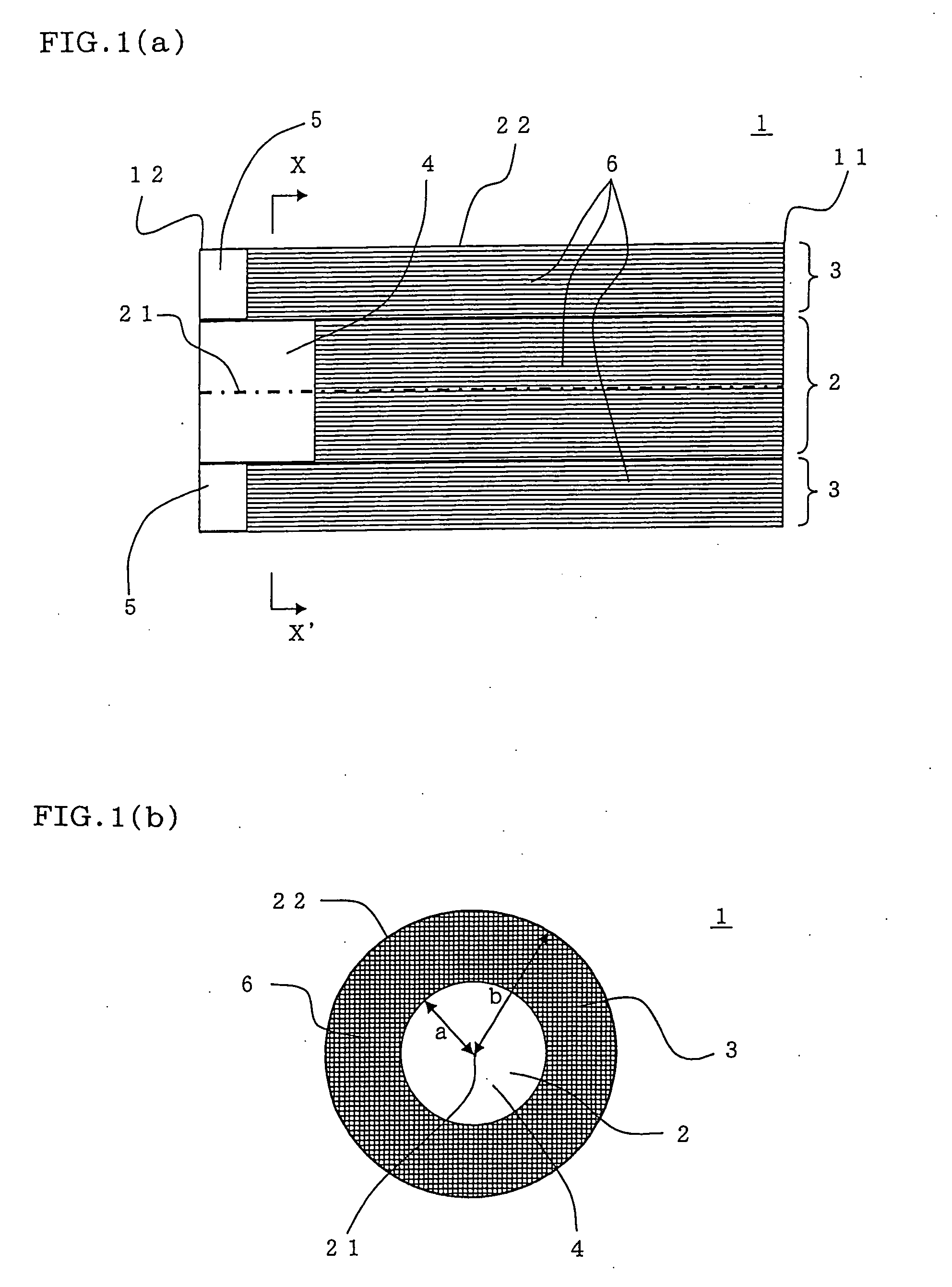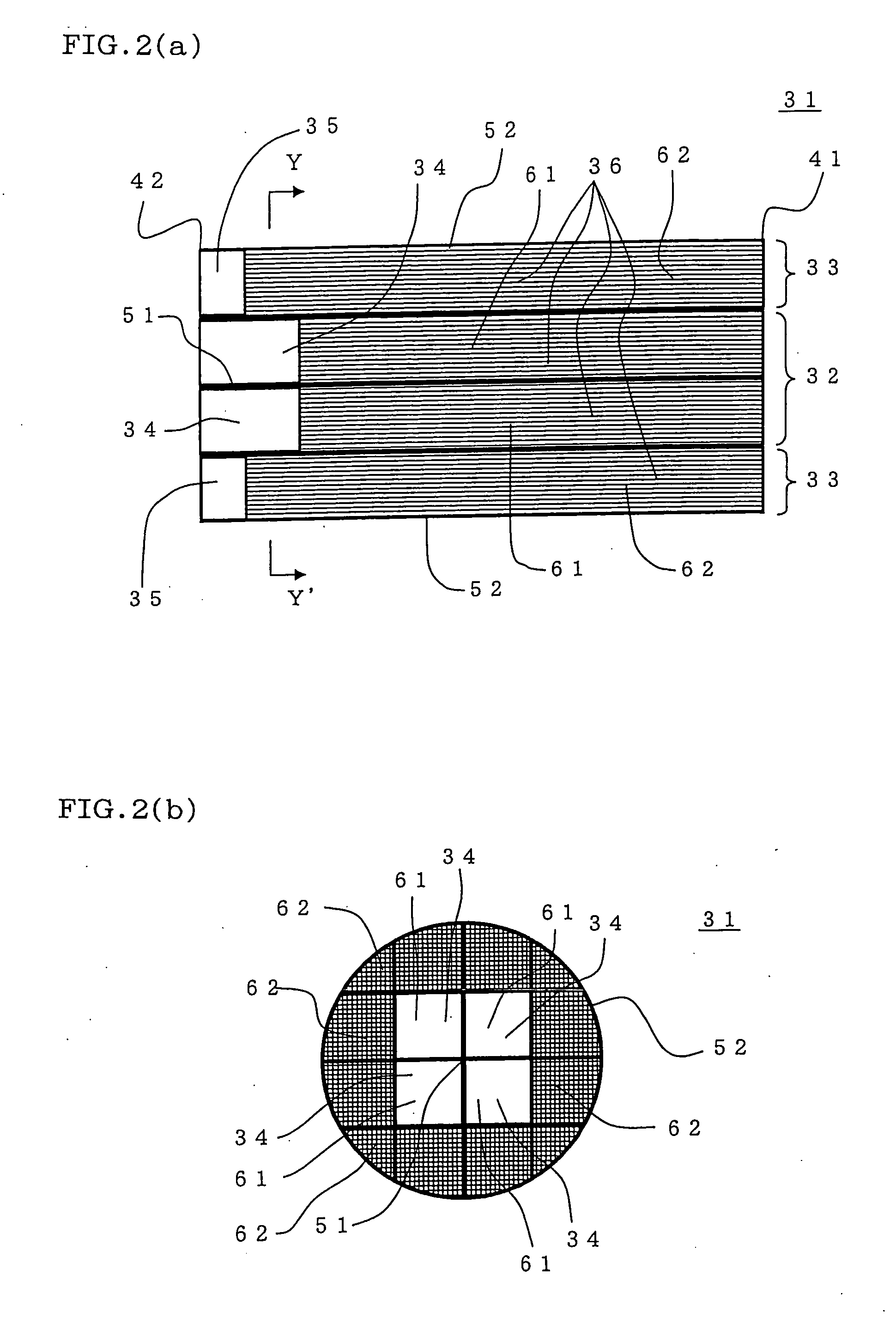Honeycomb filter
- Summary
- Abstract
- Description
- Claims
- Application Information
AI Technical Summary
Benefits of technology
Problems solved by technology
Method used
Image
Examples
example 1
[0050]There was manufactured a honeycomb filter composed of 16 (4×4) segments and having a central portion formed by four quadratic prism-shaped segments as shown in FIGS. 2(a) and 2(b).
[0051]As a forming material, SiC powder and metal Si powder were mixed at a mass ratio of 80:20 to give a mixture. To the mixture were added starch and foaming resin as pore formers and further added methyl cellulose, hydroxypropoxylmethyl cellulose, a surfactant, and water to obtain clay having plasticity.
[0052]The obtained clay was subjected to extrusion forming to obtain 16 segments constituting a honeycomb filter shown in FIGS. 2(a) and 2(b). For each segment, extrusion forming was performed using a die which gives a cell structure of 12 mil / 300 cpsi (“0.3 mm” / “46.5 cells / cm2”). The honeycomb-shaped segments were dried and fired to obtain honeycomb segments.
[0053]Next, a catalyst was loaded on the honeycomb segments and dried. The catalyst used was alumina, platinum, and ceria. The total amount o...
example 2
[0055]As shown in FIGS. 3(a) and 3(b), the catalyst was loaded on the whole honeycomb segments (100% of the whole length) lest the outer peripheral unloaded portion therein should be formed when the catalyst is loaded on the 12 segments (outer peripheral segments) 72 constituting the outer peripheral portion 71. Except for this, a honeycomb filter 101 was obtained in the same manner as in Example 1. FIG. 3(a) is a cross-sectional view schematically showing a honeycomb filter of Example 2, and FIG. 3(b) is a x-x′ cross-sectional view of FIG. 3(a).
example 3
[0056]After 16 honeycomb segments were obtained by firing as in Example 1, before the catalyst was loaded on each honeycomb segment, 16 honeycomb segments were joined to obtain a cylindrical honeycomb structure. After that, when the honeycomb structure is immersed in catalyst-loaded liquid, the central axis of the honeycomb structure is inclined from the direction perpendicular to the liquid surface of the catalyst-loaded liquid to load the catalyst with rotating the honeycomb filter around the central axis during immersion to give a honeycomb filter 102. This forms the end face on the inlet side end portion 83 side in a conical shape in a catalyst-unloaded region including the central unloaded portion 81 and the outer peripheral unloaded portion 82 as shown in FIGS. 4(a) and 4(b). The apex of the cone on the end face side formed in a conical shape of the catalyst-unloaded region was located at the site of 30% of the whole length from the outlet side end portion 84. The average leng...
PUM
| Property | Measurement | Unit |
|---|---|---|
| Mass | aaaaa | aaaaa |
| Radius | aaaaa | aaaaa |
| Efficiency | aaaaa | aaaaa |
Abstract
Description
Claims
Application Information
 Login to View More
Login to View More - R&D
- Intellectual Property
- Life Sciences
- Materials
- Tech Scout
- Unparalleled Data Quality
- Higher Quality Content
- 60% Fewer Hallucinations
Browse by: Latest US Patents, China's latest patents, Technical Efficacy Thesaurus, Application Domain, Technology Topic, Popular Technical Reports.
© 2025 PatSnap. All rights reserved.Legal|Privacy policy|Modern Slavery Act Transparency Statement|Sitemap|About US| Contact US: help@patsnap.com



